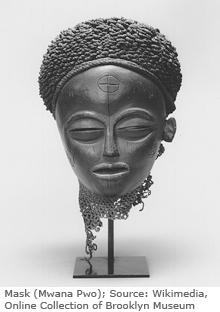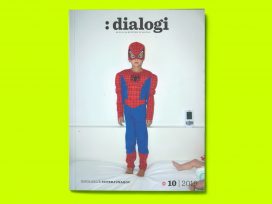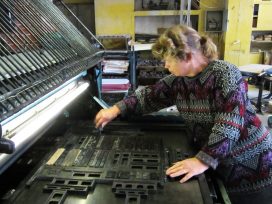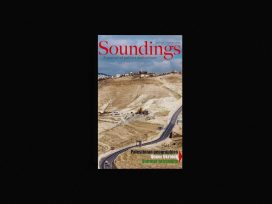Throughout Europe, ethnographic museums are being re-conceptualized, sometimes as museums of world culture. This is a move aimed at addressing questions that every museum has to be able to answer: What should it do? For whom? How? Who will pay? All of these questions have been especially critical for the ethnographic museums in their current state, sometimes referred to as “the ethnographic crisis” – in which the troubled relationship between modernity and its colonial past tends to unsettle Europe’s story about itself, particularly where the role of the Other is concerned. The establishment of new or re-conceptualized museums has been the subject of lively discussion during the last decade, including in Sweden. Here, the Museum of World Culture in Gothenburg has attracted much interest, particularly with regard to contemporary challenges of museum representation and cultural diversity.

The opening of the Museum of World Culture in 2004 marked both a break with and a continuation of the former ethnographic museum, which closed in 2000. The collections, inherited from the colonial era, remained, while the museum’s name, objectives, and practice all changed. The collections are, however, not the principle point of departure for the new museum and, owing to space limitations, have ended up in storage two kilometres away: a serendipitous event, reflecting a colonial mind-set that seems eager to disremember. The objects constitute a powerful testimony to the (high) colonial era, and the white superiority complex of the explorers who were its agents. Placing the objects at a distance corresponds to a postcolonial fantasy of colonialism as a thing of the past, but can we really rid ourselves of our material and symbolic heritage, just like that? Is it even possible to imagine museums without objects, or do they then become something else?
To actively ignore existing objects and collections ends in a disregard of the complex systems in which they produce meaning. Yet despite fancy and politically driven exhibitions, ethnographic museums still seem to be haunted by the collections and the coloniality that they represent, even if this is not immediately apparent in the exhibition venues. “Not even nothing can be free of ghosts”, as Karen Barad states. The reasons for studying museum objects today is obviously different from the rationale that early ethnography provided, and later the fieldwork that aimed at an understanding of foreign peoples and cultures, and thereby of humanity. Maybe the most important reason to study objects today is the fact that they are here. Turning our back on them hardly solves the ethnographic crisis, nor does it lessen the burden of the colonial and racist legacy that haunts us. On the contrary, we need to find ways to relate to this history, this heritage, which are not based on denial or unproductive guilt.
The controversial Musée du Quai Branly in Paris can be perceived as a French equivalent of the Museum of World Culture in Gothenburg – but of course on a much bigger scale. Opened in 2006, it is, like the Museum of World Culture, a prestige project with political overtones – Jacques Chirac was a driving force behind its founding. However, whereas the museum in Gothenburg mainly focus on ideologically or politically motivated, thematic exhibitions of a temporary kind, the Musée du Quai Branly is characterized by its geographically organized, permanent exhibitions, housed for the most part in a huge, single collections area with floating spatial divisions and brightly lit objects.
The raison d’être of the museum in Gothenburg is to provide a meeting place that “promotes intercultural exchange”, as the language of policy would have it, while the French museum’s role, according to Jacques Chirac, is to honour formerly humiliated and despised people, by showing the beautiful items that these people have produced. The Musée du Quai Branly’s focus on the aesthetic aspect of the objects is based on the universalist assumption that their beauty makes the objects meaningful for everyone regardless of ethnicity. Accordingly, it is their aesthetic, de-historicized qualities that make them interesting. Aesthetics is thus the key selection criterion, and the museum director has clearly indicated that objects lacking an aesthetic value of their own are not to be displayed in Quai Branly. According to the American anthropologist James Siegel this approach suggests that colonial heritage in the form of “‘[c]ondescension’, ‘arrogance’, ‘suspicion, contempt, and rejection’ would be replaced by admiration. And with this the credit for the objects would fall to the nations where the objects had been made.” The ethnic categorization is in fact retained, but treated as equivalent to the prefix “medieval” in “medieval art”. To categorize an object as “Nigerian” or “Beninian” is thus seemingly nothing more than a supposedly innocent qualifier comparable to that of a historical era.
The Musée du Quay Branly is also aimed at sustaining the status of the nation, of France, and the outstanding beauty of the objects should reflect the refined taste for which the French are renowned. The objects have become part of French heritage and hence represent this aesthetic sense – even though they were brought to France during the colonial era, often under dubious circumstances, and although their ownership remains unclear. The national self-image has been a focus at the Museum of World Culture as well, though with the aim of reflecting Sweden as an inclusive, multicultural society.
The focus on the aesthetic aspects of the objects at the Musée du Quai Branly, and the resulting tension between aesthetic value and ethnographic knowledge, has given rise to much criticism. At the Museum of World Culture the tension is between ethnographic knowledge and political goals. While the original, literal meaning of ethnography is to “write people”, modern ethnography seeks to increase awareness of people in their everyday social and cultural contexts. However, this is not quite the same as to promote intercultural exchange – which we generally know very little about – and the discrepancy between the two objectives deserves more attention.
The Museum of World Culture has been favourably compared with the Musée du Quai Branly, which is often mentioned as the antithesis of the Swedish museum. But is the difference between seeking to honour formerly humiliated and despised people, and to promote intercultural exchange actually that great in practice? In both cases, the objectives involve strengthening existing self-images: in France the one depicting the country as the highest court of good taste; and in Sweden the one about being the ultimate domicile of good will. At the same time, and in spite of the ideological ambitions driving the museums, in both French and Swedish cases a kind of unintentional ethnography is being conducted: a haunted ethnography.
Siegel points to how collections are made available through a classificatory system that fixes and delimits the understanding of the objects. The collections of the Museum of World Culture in Gothenburg contain about 100 000 objects. These are classified in accordance with a variety of ontological and epistemological principles dating from the period in which the objects were acquired. These principles are difficult to grasp, but they determine what can be found. Ongoing digitization of the collections does not usually lead to any real innovation in this respect, but merely a change of medium.
The birth of ethnography coincides in time and space with a strong belief in the potential of classification. Ethnography and classification worked together in seeking to organize the disorganized, to tame the wild; and to create a home for the strange, which became less strange when categorized within scientific systems. Critical race scholar Sara Ahmed goes further, and shows how anthropology did not merely bring the strange closer but actually created it. It is not until the stranger is taken “home” – for example through the items collected for the museums – that the stranger appears. The stranger does not exist before we get to know it – in the sense of producing knowledge about it. Getting to know the stranger also means that a “we” is reinforced. “Knowledge is bound up in the formation of a community, that is, with the formation of a ‘we’ that knows through (rather than against) the stranger.”
Today, many ethnographic museums are trying to dissolve the boundaries between “us” and “them”, where – in the spirit of enlightenment – the first category know, and the second gets exhibited and known. This is especially true for the museum in Gothenburg. With the conceptual shift from ethnographic museum to world cultural museum, it was imagined that the categorizations that previously determined museum praxis would be overturned, and everyone would be welcomed as equal members of a supposedly common and inclusive culture. The museum seeks to be a positive voice in the public conversation about diversity and “a place where people can feel at home across borders.” The exhibitions are to take shape via encounters with the audience. At the same time, there is a pronounced external focus: “The assignment of the Swedish National Museums of World Culture is to show the world’s cultures and bring them to life, especially cultures originating outside of Sweden.” Thus, the meeting is still between “there” and “here”, and “here” consists primarily of the exhibition venue and its staff, while “there” characterizes the exhibit content, and the imagined – multicultural – audience. Bodies are considered to be more or less close to the “here” that is (in) the room. Some bodies will be recognized as having been “here” from the beginning, while others will be recognized as arrivals. These deep-rooted conceptions will determine how bodies pass in the museum venues and outside of them, how bodies are recognizable, as “home” and close or as something else.
Through exhibitions covering themes such as migration, and with for example public Eid celebrations in the museum premises, the museum seeks to reflect the contemporary state of society. But where does this leave world culture? Though sometimes treated in the singular, as one culture, it is nonetheless a singular that is supposed to accommodate – and unite – many. Herein lies its potential gain, but also its problem – a problem that it shares with other practical and political manifestations of the diversity discourse, and its very grounding in the logic of difference, albeit benevolent. The concept of world culture was supposed to dissolve existing borders and to free us from ethnicism. Maybe it would have worked if it was not for the colonial heritage, and if it had not been formulated in a world where the prefix “world” leads a life of its own – for example through the concept of world music, which has become another word for “ethnic music”.
Maybe one should understand the great contemporary European museum conversion not only as a penance, as a way of righting the wrongs of colonialism, but also as an attempt to rescue a type of museum that has actually served its purpose. What do these (re)new(ed) museums achieve, in their postcolonial finery, other than to secure their own survival? Does this life on borrowed time really help the cause of honouring the formerly humiliated and despised, or promote intercultural exchange? Or have the political declarations merely provided an essentially colonial project with a future, in a time where the openly colonial has become impossible? Should these museums be understood as neocolonial rather than postcolonial?
We see two possible “solutions” to the ethnographic crisis. One is quite radical, but perhaps without much effect regarding the hauntings of colonialism, and therefore not particularly appealing – to obliterate the heritage that collections constitute: give them back or sell them to the highest bidder – even close down the entire museum function. This option involves many practical, ethical and epistemological problems. Because to whom do the objects belong – produced as they often were long before nation states were founded, perhaps by a people that no longer exists as a people? So to whom should they be returned? Can one sell something one does not own or know who rightfully owns? Many items also lack economic value; can they in that case just be destroyed? We leave this option for now, as currently unrealistic.
The other option is to move away from the universalistic claims regarding the question of what ethnographic museums should do, and instead let a slow and careful work with the collections commence. The example of Quai Branly clearly shows that it is hardly appropriate “only” to show the objects, without contextualizing them, without telling “their” story. But what is their story? Is it possible that they tell as much about the circumstances that brought them “here” and about the now in which we are confronted with them, as about the then and “there” where they were once acquired?
***
During one week in March 2012, as part of a project called “The State of Things”, we were involved in planning and executing a lab at the Museum of World Culture in Gothenburg. This involved the selection of around 40 different items from four different collections (Aboriginal, Sami, Mapuchean, Congolese). Four specialists from different parts of the world, with knowledge of different parts of the collections, were invited, as well as a translation scholar with a particular interest in museum representation. In addition, some twenty other (mostly local) researchers, journalists, writers and museum professionals participated. The project was a collaboration between museum staff and the Critical Heritage Studies group at University of Gothenburg, and funded by the Swedish Arts Council. Its goal was to seek new methods of working analytically with the collections, through interdisciplinary and intercultural dialogues.
Everyone involved worked to try to relate to the objects, although the distance people felt between themselves and the objects varied. In some cases the objects were virtually identical to everyday items still in use by some of the participants. In other cases, the objects had a direct link to an individual family history. We could only guess the usage for some objects, based on knowledge of similar items from neighbouring areas. Yet, many thought provoking stories were generated about these objects during the lab week. Stories that were not controlled or formed by a specific exhibition idea, a director’s vision, or by absolute claims of truth. The stories were sprawling and ambiguous, faithful and unfaithful to received histories of the objects, and went far beyond the requirements of informativeness, accessibility, accuracy and so on. While such requirements cannot be ignored when it comes to actual exhibits, they may be more limiting than liberating when wanting to explore the possible meanings of objects, or break away from the museum’s epistemological and ontological assumptions.
By taking the collections as the starting point for analytical work, temporal and spatial contexts and discourses surrounding the objects can be highlighted. These are often naturalized, or so deeply embedded in the objects and the collections that they become one with them. One way of approaching such contexts and discourses is to examine the systems of representation that define and systematize the collections – such as catalogue texts, letters and documents in museum archives and texts produced in conjunction with exhibitions, if indeed the objects were ever exhibited. Text and matter define each other at the museum, including as representatives of “here” and “there”. The objects come from “far away”, while the texts almost always are from “here”. This dichotomy is itself a relic of the classic colonial structures that were decisive when the collections were created, and the logic has survived both inside the museum walls and outside. The texts, thus usually produced “here”, by white museum officials, are speaking, while the objects retrieved from “far away” are quiet, passive and anonymous.
The specialists at the lab highlighted and tried to correct errors and shortcomings in the scarce information provided in the archives about the objects. This mainly concerned incorrect names of places and things and misinterpretations of the areas of use. Anonymous portraits received particular attention. Captions often stated simply “woman”, “man” or “native”, sometimes with time and geographic location specified (only in exceptions were people named). This tendency is well explored in the literature on how ethnographic museums reproduce difference. The ethnographer or collector is carefully registered, and the collection often named after him, while the “natives” are typologized and seen as representatives of a tribe, a gender, an age and perhaps a social position.
The lab showed that, with the help of relatives who are still alive for example, the names of people in the pictures and their individual stories might still be recovered. One of the specialists remarked at the sight of the photographs in the collection: “These photos could be part of someone’s family album, today.” She continued, “instead of stopping at the issue of what to do with our collections, we should ask ourselves how we can make them grow”. Another participant urged the museum to talk about her – as part of a society that has come to be represented by a dusty collection – in the present tense. “We are not gone. We exist, today. Here, we are talked about in the past tense, as if we were dead.” Museum objects and museums as representational institutions are not only about violence committed in the past, but also about the ongoing repercussions of colonial violence.
It is worth reflecting on how both objects and specialists were selected in accordance with a certain geographical/spatial logic. Regarding the objects, this is perhaps not so surprising, given the geographical classifications in the archives. However, the current situation in the storage facility is different, where objects are sorted according to material, size, and function, rather than geography. There is for example a storage room with long lines of spears, and rows of shields. Opposite are shelves with baskets. In a cooler room, feathers and fur are kept – usually in the form of ritual decorations. This physical reality did not help us think beyond the more abstract system that the two-dimensional archive cards uphold.
Whereas old habits determine the selection of objects, the selection of the specialists amounted to an expression of the post-colonial benevolence that characterizes many contemporary museums – and the desire to give a voice back to those who were once silenced. The project’s main objective was to “decode unspoken common assumptions” in museum practices. In creating a framework for the project, we acted in accordance with assumptions about specific people’s special connection to specific locations, because we wanted to complement the voice of the white ethnographer (whose voice is still very loud in the collections) with other voices. Thus, the lab too invited ethnographic and classificatory hauntings. This can be read as a failure: we acted in accordance with assumptions rather than decoding them – but it can also be read as a recognition of how the hauntings of colonialism infect contemporary political benevolence in a way that sometimes seems inevitable.
Where do we end up if only Aborigines are allowed to talk about Aboriginal objects? If only Sami can talk about Sami culture? Do we not take several steps back from the anthropological and postcolonial critique, challenging the traditional concept of culture and the fantasy of distinct and stable cultures? Coming to a Swedish museum as an Aboriginal curator and seeing the shortcomings of the Australian collection obviously forces a rewriting and overwriting of the colonial stories. But is that enough? Can we ease our conscience, heal our colonial wounds, if the “right” information is in the catalogues and on the labels, and the “right” person has contributed with it? Can we ever leave the colonial phase behind? Maybe, but only to lead into the postcolonial phase that should perhaps be known as neocolonial.
A museum object is characterized by layers of meaning, layers of representation, and each object in a museum collection enables many different times and stories. It is possible to let the “original” context of an object remain important while integrating other stories and give other connections prominent roles. Sometimes the different stories will be in conflict, which should not necessarily be seen as a problem. That they collide can contribute to the uncovering of the way coloniality works today, in contradictory ways.
***
Ethnographic objects hurt, because they represent a colonial wound, a both past and present violence. As is so often the case with pain, the impulse is to avoid what hurts, and the way European ethnographic museums are handling their collections can be read as such an avoidance. To only see the aesthetic qualities of objects, like at the Musée du Quai Branly in Paris, or to place the objects in a remote storage facility, as in the case of the Museum of World Culture in Gothenburg, gives coloniality new opportunities to haunt us. If we are serious about wanting to “right wrongs” and get closer to objectives such as that of the Museum of World Culture – to be a place where people can feel at home across borders – one must, perhaps, as Sara Ahmed says, be as sore as our sore points, and stay so for a while. Stay with the pain instead of hurrying to get away from it.






